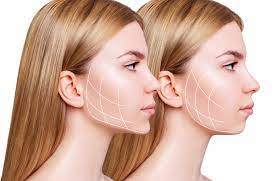 Dermal fillers are a type of plastic surgery used to improve the appearance of the skin. The procedure involves injecting an element into the skin to add volume and achieve a more youthful look. The global dermal fillers market size was $3.73 billion in 2019 and is projected to reach $6.64 billion by 2027.
Dermal fillers are a type of plastic surgery used to improve the appearance of the skin. The procedure involves injecting an element into the skin to add volume and achieve a more youthful look. The global dermal fillers market size was $3.73 billion in 2019 and is projected to reach $6.64 billion by 2027.
There are different dermal fillers available, each with benefits and drawbacks. This article will explore what you need to know before getting a dermal filler treatment. In addition, it will provide an overview of the most popular dermal filler treatments currently available.
What Are Dermal Fillers?
These fillers are gel-like substances injected into the skin to help restore its volume and smooth out wrinkles. They can also plump up lips, cheeks, and other facial areas.
How Does the Procedure Work?
The filler is injected into the skin with a needle. The needle is much smaller than those used for other injectable treatments, such as Botox injections.
What Are the Side Effects?
Dermal fillers are considered safe when performed by a qualified aesthetician or plastic surgeon. The most common side effects are temporary and include bruising, swelling, redness, and pain at the injection site.
Your cosmetologist will work with you to determine the best dermal filler for your needs and help you achieve the look you desire. They will also help you manage the symptoms by using a numbing cream before the injection and ice afterward.
How Long Do Dermal Fillers Injections Last?
The results of the fillers can last anywhere from six months to two years, depending on the filler used and where it was injected. For example, choosing a filler made from hyaluronic acid will break down faster than one made from calcium hydroxylapatite.
Types of Dermal Fillers
Some common types of dermal fillers are explained below:
1) Hyaluronic Acid Fillers
Hyaluronic acid fillers are a popular type of dermal filler. They are made from a natural substance that is found in the body. It makes them safe and effective to use.
Hyaluronic acid fillers work by adding volume to the skin. They can be used to correct various problems, including wrinkles, fine lines, and sagging skin.
The results of hyaluronic acid fillers are temporary and typically last for six to twelve months.
2) Collagen Fillers
If you want a permanent solution, you may want to consider collagen fillers. Collagen is a protein that is found in the body. It can keep the skin firm and elastic.
Collagen fillers work by replacing lost collagen in the skin. They can help reduce wrinkles, fine lines, and other signs of aging.
3) Fat Injections
If you’re not quite ready for dermal fillers made from synthetic materials, you might want to consider fat injections. It is a procedure where your body fat is used to plump up areas with lost volume.
Fat injections are usually done with liposuction, so it’s a two-for-one deal. The fat is first removed from an area of your body via liposuction and then injected into the areas that need filling.
It is a semi-permanent solution as your body will reabsorb some of the fat over time.
Conclusion
With the rising plastic surgery trends, dermal fillers have become increasingly popular. Remember to call a board-certified plastic surgeon to ensure that you get the best treatment possible.









![Daily Bite [Make]: Philly Cheesesteak Stuffed Bell Peppers](https://dashofwellness.com/wp-content/uploads/2013/01/Philly-Cheesesteak-Stuffed-Pepper-Daily-Bite-1-100x70.png)
